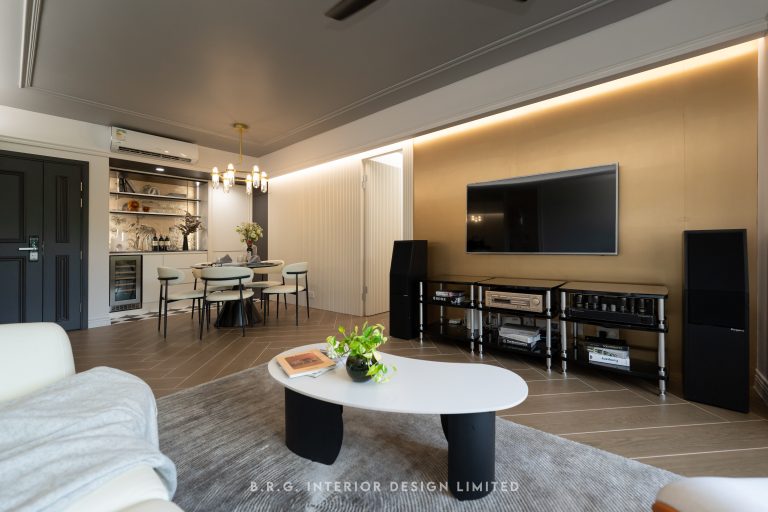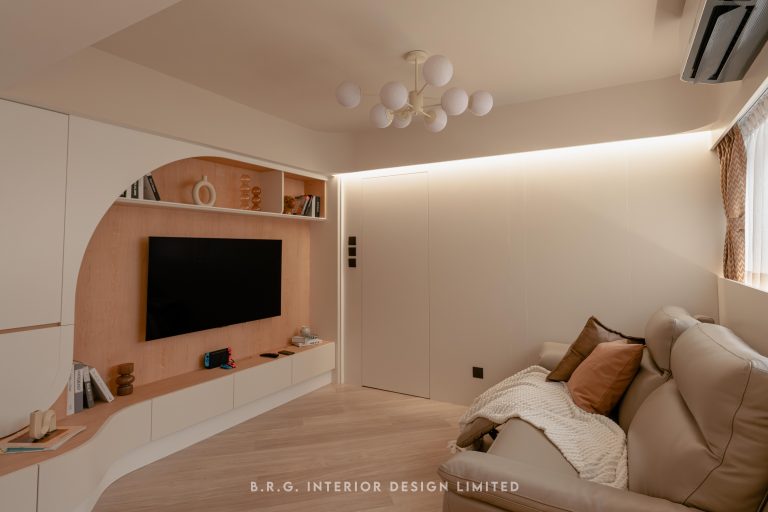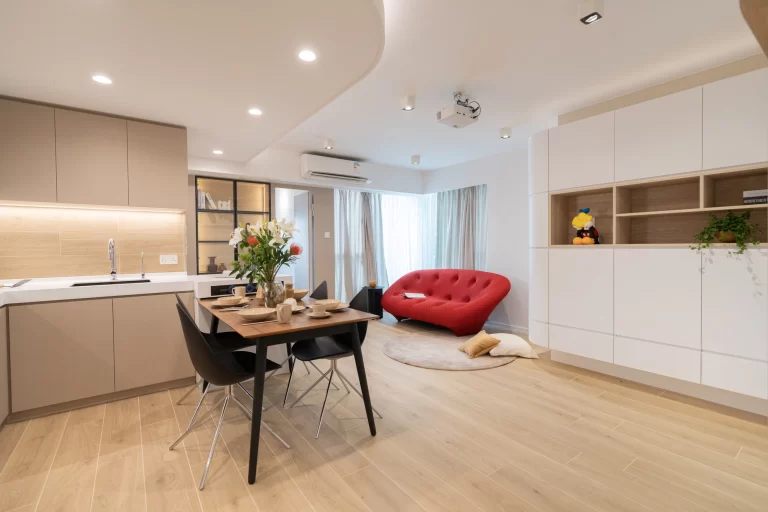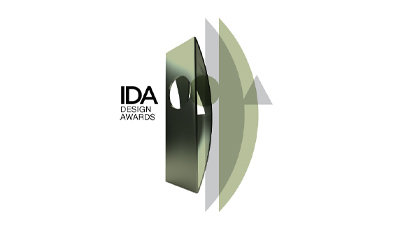- Nature:Residential
- Style:-
- Color:-
- Property:上水中心 Sheung Shui Centre
- Building Area:465sq. ft.
- Practical Area:351sq. ft.
A Cozy “East-Meet-West” Home
Our mission in this “East-Meet-West” interior project is to transform a 351ft unit into a chic and modern “Industrial Japanese Home”. The first task of this project is to tear down the kitchen wall and relocate it to the opposite direction. By aligning all the rooms on the same side, it creates a more spacious living room from a area of just 100ft to 200ft. A neat space setting also provides more flexibility to designers to present the idea.
To create an " Industrial Japanese" interior design, wood is vital. “Wood” unifies the space, but “Wood” also creates visual hierarchy to distinguish features. In this unit, gradient wood colours are used in different sections to highlight the characteristics and functions of each area, also avoiding the boredom of over-emphasizing on one colour and enriching the whole visual effect. From the moment you step on the light wood colour flooring with your feet, then take a look at the surroundings in which natural wood and industrial elements are well blended, you’ll be surprised at how these opposites can join in a wonderful harmony.
In the living room, most of the furniture used light-colour wood veneers to create a Japanese home style which emphasizes simplicity. With exception of the box-shaped working bench in dark walnut colour behind the sofa. The owner lives alone for the time being. This design is more human-centred with a hybrid function. It allows the owner to place different electronic devices and fulfil the dining table purpose at the same time. Making it into a box shape is to create a quiet and focused working atmosphere. For the ceiling part, we blended in the industrial element by using the raw cement colour which matches with the light grey wall painting. Their opposed attributes just can complement each other’s advantages.
The tips for Industrial Japanese design is “right ratio”. Industrial style has a relatively strong colour scheme, such as concrete, cement, metal and unpolished wood. To avoid losing the balance, try to use it as a decorating colour in small detail. In our project, those colours are being use on doors, ceiling and the frame under the TV cabinet. It will not be over-bearing, but add layers to the whole design.
In the kitchen part, we apply same rule that we used in the living room, using gradient colours from top to bottom direction to make the whole design coherent and create connections between each part. We also made a new move in choosing kitchen materials. Instead of building the cooktop and wall area with traditional marble, we choose high-density tiles which is more durable as a kitchen material. To meet the fire protection requirements, we installed a glass sliding door with a industrial style dark-coloured frame to allow light pass through in order to achieve a wider visual effect.
The last feature of this project is the master room. The owner works for a night shift job. We painted the bedroom wall in industrial theme colour --charcoal dark with the purpose of establishing a sleeping-friendly environment for his reverse sleeping pattern. Apart from the main design, we also pay attention to every detail, such as taking care of every gap around the window to stop any sunlight to go into the room that may affect his sleeping quality. For example, using lengthened 100% blackout curtain, changing to split type air-conditioner from window type, installing a charcoal dark colour wooden frame along the curtain track to cover the gap. Other furniture in the bedroom also followed the main them “Industrial Japanese ”, such as the light grey colour platform bed and the wood colour wardrobe.
Establishing a spacious, blend style living environment within 351ft is not impossible. The key point is matching colours properly and using in suitable ratio. Now, it is your turn to tell me which fusion style you like.










